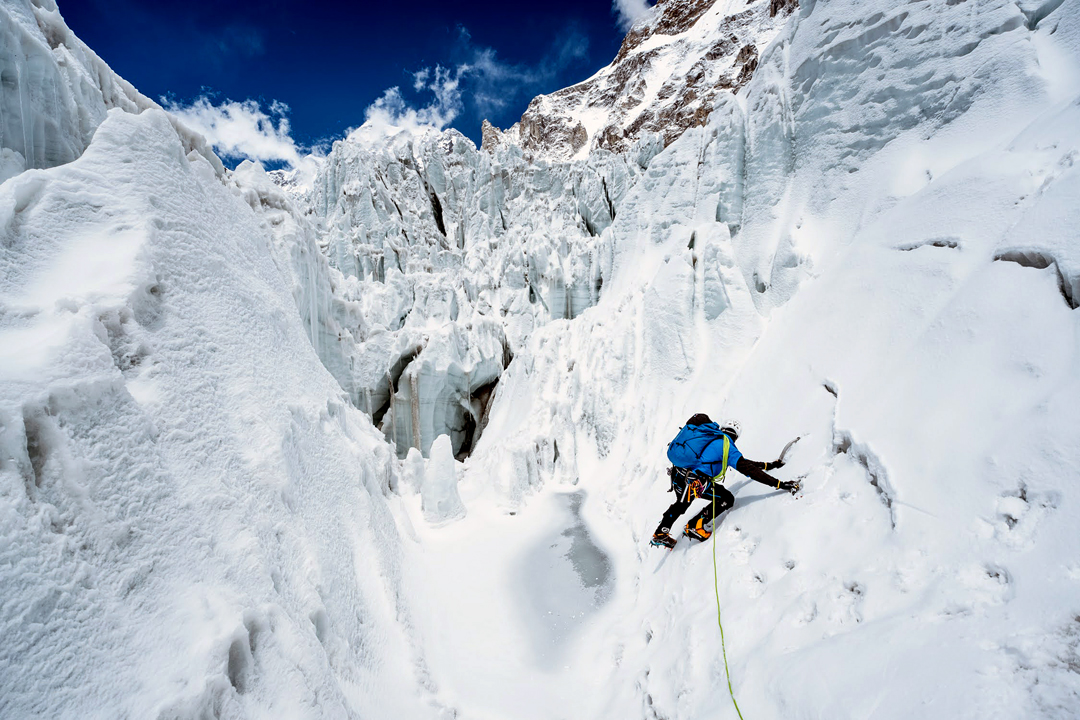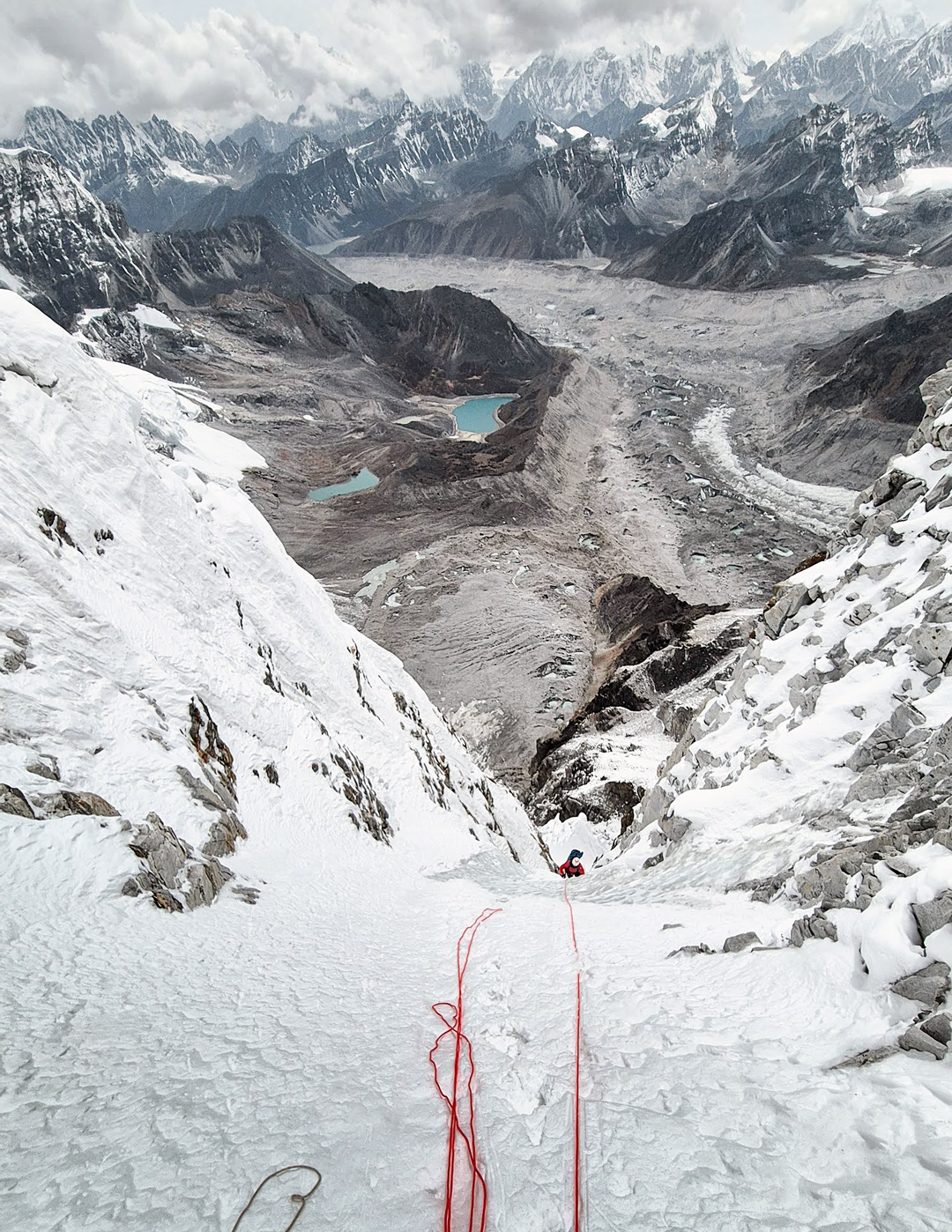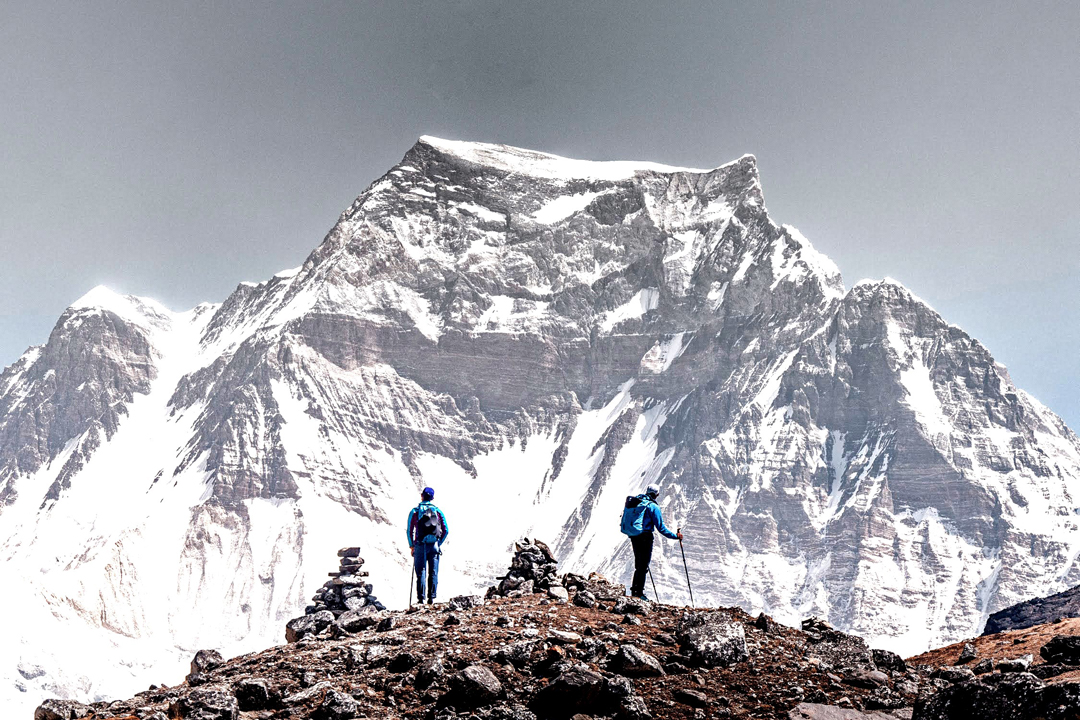Hungchi, West Face and First Alpine-Style Ascent
Nepal, Mahalangur Himal, Khumbu Section
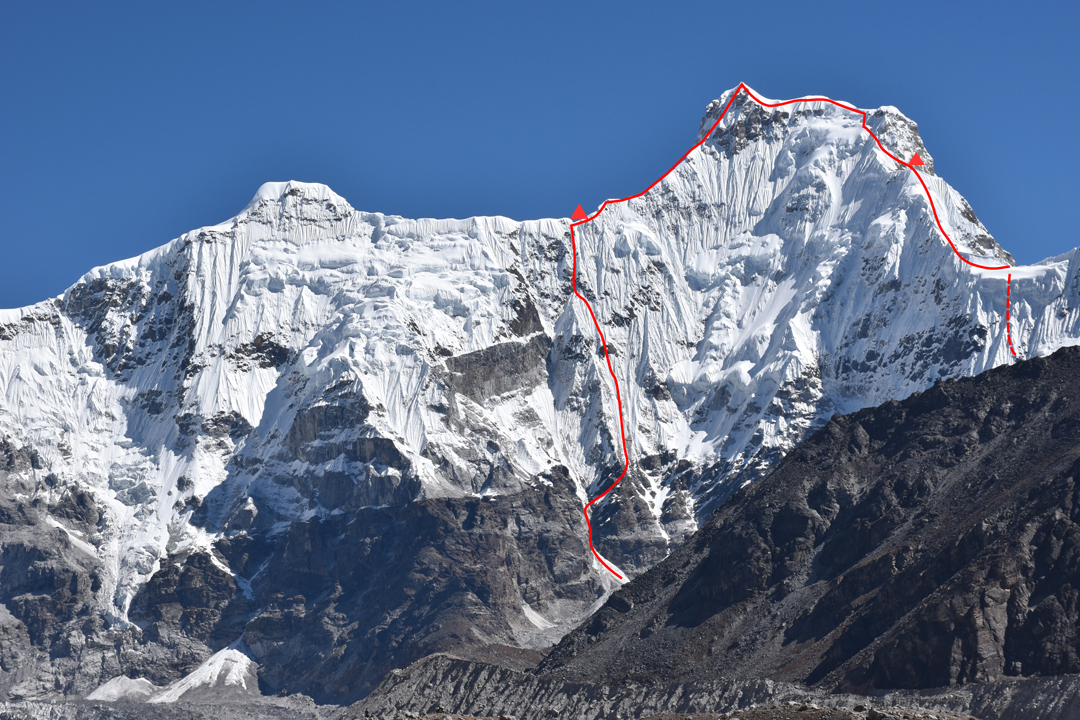
When you go on an expedition to the other side of the world, things rarely go to plan. Our ascent of Hungchi was unexpected.
Charles Dubouloz and I arrived at our 5,060m base camp below Gyachung Kang (7,952m) in May, hoping to establish a new route. However, during our acclimatization I fell ill. Going to the foot of Gyachung Kang, I was no longer able to put one foot in front of the other, and after a bad night we were forced to return to base camp. A nasty case of bronchitis had attacked me, as well as our plans.
I took a week’s rest and plenty of medication. Meanwhile, Charles attempted the southwest ridge of nearby Hungchi (7,029m), spending three days alone and reaching around 6,200m. [A Japanese expedition first climbed the mountain via this route in 2003; see AAJ 2004.] Independently, both of us had spotted a new line on the west face of Hungchi, and this quickly became our Plan B.
Following Charles’s return, we had three days of rest, after which he was still a little tired. I was back up to about 80 percent. We had half a weather window.
We set off from base camp on May 16, and after four hours of walking over moraine, camped at 5,300m. Our line was toward the left side of the west face, and would require a 1,300m ascent to reach a small depression on the northwest ridge at around 6,580m. [The northwest ridge was first climbed from the Tibetan side, in 2006, by a Japanese expedition.] There was no possibility of a good bivouac on the face, so we needed to climb to the ridge in a single day.
We set off at 5 a.m. the following morning. I was in a worse shape than Charles, so he took the lead more often. Conditions were good, with no cloud or wind, but the 12 hours on the face felt like the sporting performance of a lifetime. At the shoulder, I was exhausted and had a headache, and Charles had to set up the tent. At that moment, Charles doubted we would continue, but the next day was his birthday, and who could refuse him the gift of a summit?
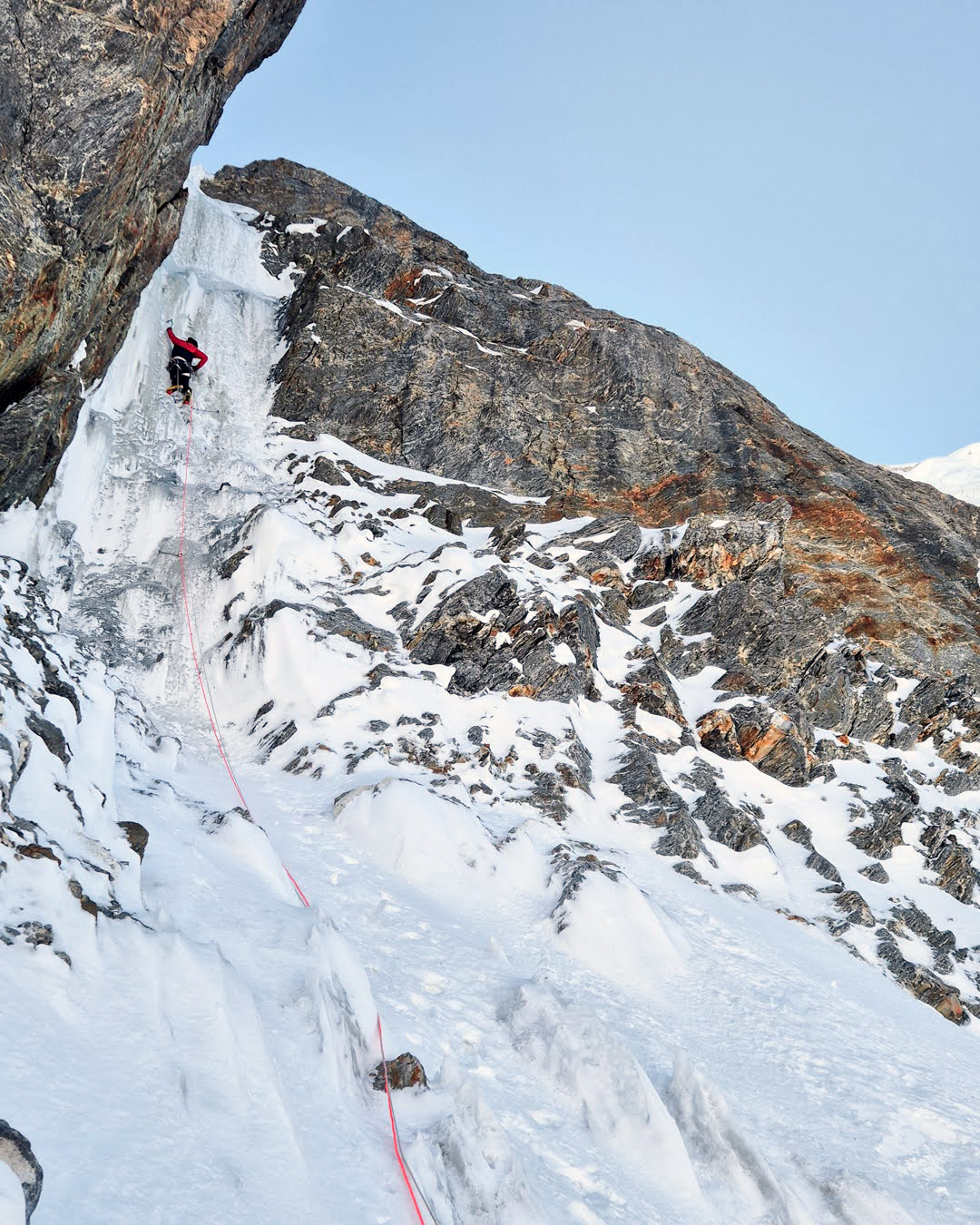
We barely ate, and inevitably the night was bad, but the next morning’s sunshine boosted our motivation. Those last 400m up the technically moderate snow ridge took us a full six hours. Why was it all so hard? In mountaineering, at least, there is no great success without great suffering. At 1:30 p.m., we reached the summit. It was snowing, the wind had strengthened, but Charles was now 35.
We elected to descend the steep southwest ridge, which Charles had previously attempted. It turned out to be complex, with unreliable snow that allowed almost no opportunity for rappelling. We hoped to drop to 6,300m for the night, but got no farther down than 6,700m, where it was snowing hard and our headaches were only just beginning to dissipate. We managed to drink but didn’t eat anything, and the tent broke during the night.
On the morning of the 19th, we told ourselves we had to be at base camp that evening, because the forecast for 20th was super ugly. Reluctantly, we decided to abandon the tent to be lighter. We descended to below 6,500m, at which point we could see barely two meters ahead, and we knew from prior observation we had reached the most complex section of the ridge.
To our right was a 1,200m face with seracs: We didn’t have enough gear—or a shield—to descend that way. However, the map indicated the east face on the left was “only” 700m to the glacier. We hadn’t seen it, but we took this option, beginning a series of rappels from Abalakov anchors. With no idea whether there would be dangerous seracs or loaded slopes ahead, our anxiety about hitting a dead end was palpable. However, fortune smiled. A few hours and less than 15 rappels later, we were trudging down a steep snow slope at 6,000m.
It took a further three hours after reaching the glacier to walk south then west around the mountain through a chaos of blocks and boulders. At around 8 p.m. we struggled into base camp. We named our route after the French song by Saez: “Le Cavalier sans Tête” (“The Headless Horseman,” 1,700m, ED).
—Symon Welfringer, France
Editor's Note: Hungchi had only been climbed three times before, all with extensive use of fixed rope and camps. The alpine-style ascent by the French pair was also the first traverse of the mountain.


